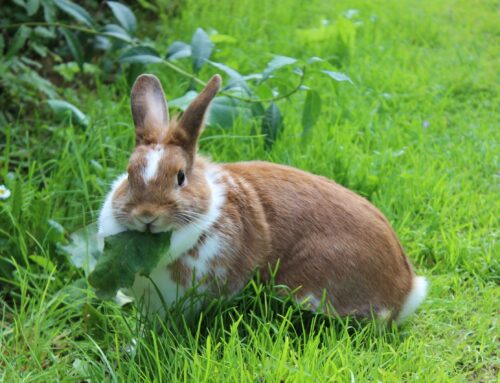When it comes to teeth, most pets are very similar to humans in that they only have one set of adult teeth, so we must look after them. Pets use their jaws for so much more than eating, too – their teeth are used for grooming, playing and carrying objects. We brush our teeth daily, use mouthwashes and apply toothpaste which supports our gums. Our pets’ teeth require attention too!
What is dental disease?
There are many different degrees, severities and types of dental disease. It is much easier to prevent dental disease than to treat it. It is very important to remember that dental disease cannot be reversed so intervening as soon as possible is vital.
It takes 4-5 days for plaque, the white substance that sticks to the surface of a tooth, to be converted into tartar, a solid brown substance. If we can remove this plaque within 4 days of it forming, we vastly reduce the risks of tooth disease, although other factors, including dental layout and genetics, also play key roles in dental disease.
How you can improve your pet’s dental health at home?
Dentastix are a great treat which work to knock plaque off the teeth before it has time to convert to tartar, the much tougher brown substance. However, they’re very rich in calories (far more than you’d expect!) so should be used sparingly. They also won’t address any tartar forming right down at the bottom of the tooth, near the gumline.
Hard treats or kibble work well, again knocking plaque off the teeth. Dental diets are available for both dogs and cats from many reputable brands. They contain biscuits which have a fibrous texture which act like a toothbrush. The teeth must sink into the biscuits multiple times before the biscuit will crack, offering lots of opportunity for any plaque to be removed. If you change your pet’s diet, please do so very gradually by mixing the new and old food in ratios which gradually favour the new food over a period of 7-10 days. However, if a pet’s mouth is already painful in some areas, they will not chew using the painful area of the mouth. If your pet’s dental disease is already at this stage then a dental by your veterinarian is required. And once more, they are better at cleaning the tops of the teeth than the bottoms!
Brushing your pet’s teeth is a great idea. It can be very difficult to introduce tooth brushing to an older pet, so starting tooth brushing when your pet is young will help it to form part of a routine. Pets will quickly get used to the action of having their mouth opened and having the brush put inside their mouths. Starting this when your pet is an adult can be challenging and even occasionally dangerous, as many pets only have this done when they are at the vets, which makes them feel uncomfortable. If you want to start brushing your pet’s teeth, make sure you have a pet toothbrush and pet toothpaste, as some ingredients in human toothpaste can be toxic. Brushing your pet’s teeth is also important as you learn what your pet’s mouth looks like, making it easier to spot any changes quicker. This is also the only method that can clean right down the tooth surface.
How do I know if my pet has poor dental hygiene?
Some symptoms are seen early on, but most of the signs will appear as the disease reaches its more severe stages.
Common clinical signs associated with dental disease include:
- Halitosis (smelly breath),
- Weight loss,
- Inappetence (or selective feeding, eating only the softer bits),
- Hypersalivation,
- Discoloured teeth (brown staining is most common),
- Gingivitis (inflamed gums),
- Loose teeth,
- Mouth sores.
If you notice any of these clinical signs, you should make an appointment with us. Performing a dental procedure has a better prognosis if performed at an earlier stage in the disease because if the disease has not progressed as far, they will need fewer extractions and will be able to use their mouth more normally soon after.
What is involved in a ‘dental’?
Prior to booking a dental, we will have performed a thorough clinical exam and explored the mouth as much as possible from the outside without causing undue stress to your pet. Your pet will be taken into a prep room where they will receive lots of cuddles from our nurses. They will be weighed allowing the correct amount of sedation and general anaesthetic to be given. Sedation and anaesthesia allow the vet to open your pet’s mouth more freely and look in greater depth, allowing clinical decisions regarding the scope of the dental treatment required.
During the oral exam, X-rays may be needed in order to view the tooth roots and connections into the bones more clearly. The vet will then fill out a dental chart for each individual tooth including: gingivitis scoring using a probe, furcation index – how severe the bone loss is between roots of multi rooted teeth, checking for tooth resorption (most common in cats) and performing a periodontal index test to see if the gums are receding too far.
After looking at these scores, your vet will decide whether any teeth need removing and how they will remove them.
A scale and polish will be performed, which involves removing any tartar from the surface of the tooth using a small, vibrating tool. Any tooth extractions happen just before polishing of all remaining teeth.
How long will it take for my pet to recover after the dental?
The drugs required for a general anaesthetic take a maximum of 8 days to completely leave the body, although most clinical signs (typically drowsiness) will stop after 48 hours. Some owners report no clinical signs after leaving the vets, so this does vary.
Some pets will need wet food for a period of time whilst their gums heal. Pain relief and anti-inflammatory medication may be required following the procedure.
Rabbits
Rabbits are a slightly different story – they have 16 teeth in their maxilla (top jaw) and 12 teeth in their mandible (lower jaw), which continually grow throughout their lives. With the correct diet, their teeth will naturally wear down, maintaining a normal length and alignment. Without the required amount of hay to chew, their teeth continue to grow, which can cause cuts in the mouth and lead to painful abscesses, or misalignment and the inability to eat properly. Ensuring your rabbit has plenty of hay to eat (a bundle the same size as your rabbit is a good guide!) encourages chewing which maintains an appropriate tooth length.
Overall, tooth health is very important. Tooth pain can cause multiple different symptoms and ensuring your pet’s dental hygiene is consistent and thorough is important in preventing disease.
If you’d like to find out what Acorn Vets can provide and more info on dog and cat dentals in Mallow, contact us here.



